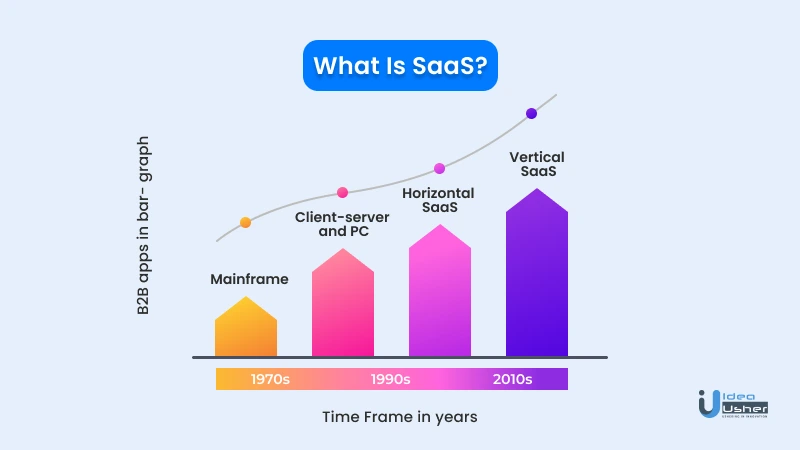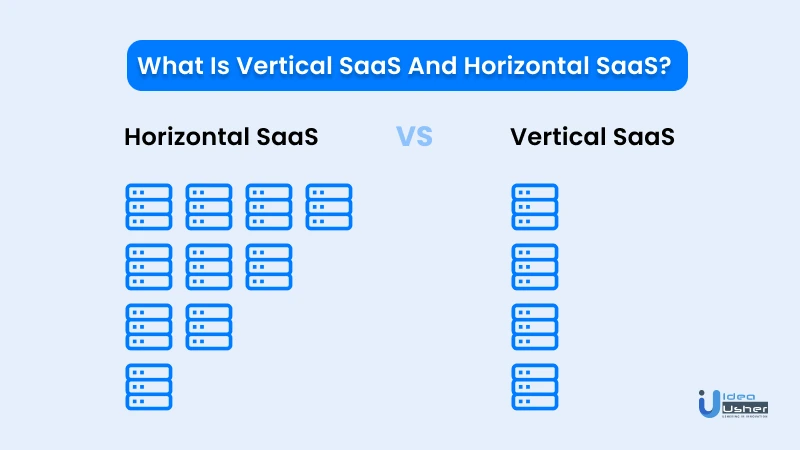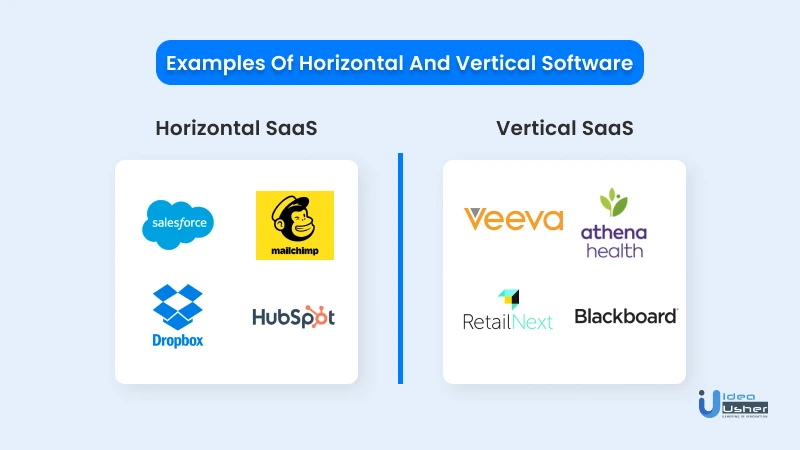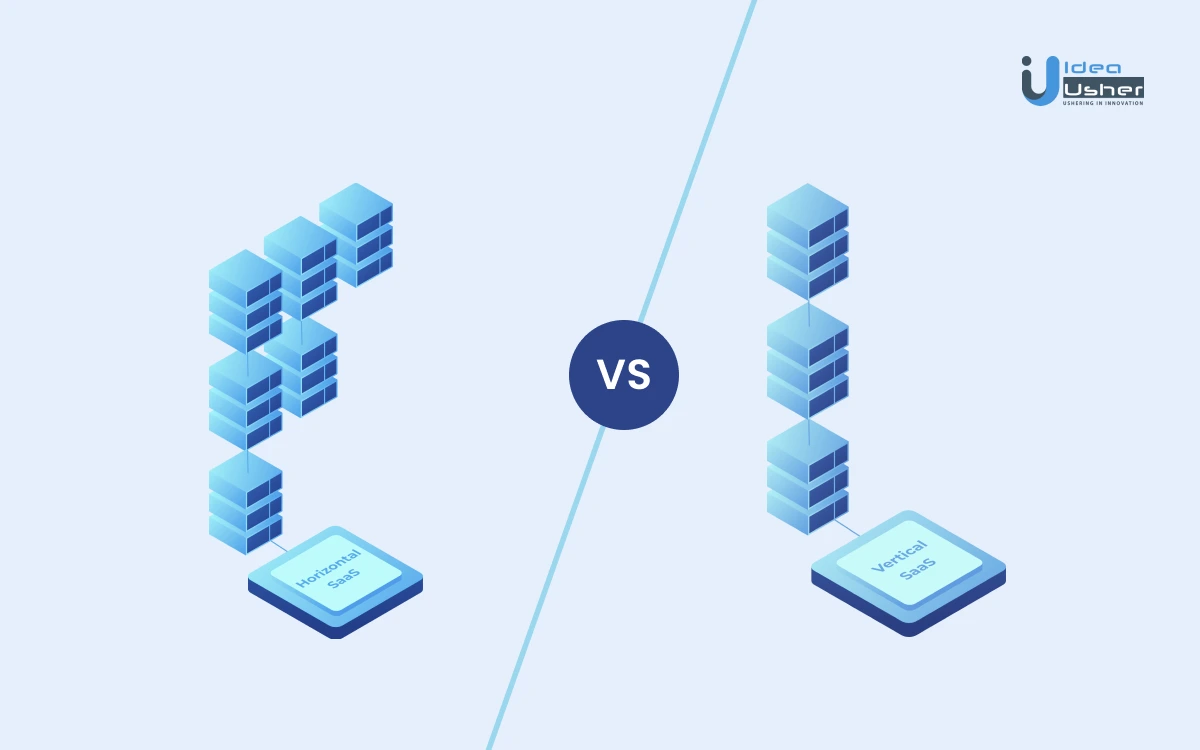SaaS, or Software as a Service, is a way of distributing software that can be incredibly beneficial to companies. Significantly, small businesses that want to avoid the costs of maintaining their infrastructure.
However, not all SaaS models are created equal. Most SaaS models follow one of two main approaches: horizontal and vertical. This article will explore different aspects of vertical vs horizontal SaaS.
What is SaaS?

Software-as-a-service (SaaS) is a software distribution model in which a third-party provider hosts applications and makes them available to customers over the Internet. SaaS is one of three main categories of cloud computing, alongside infrastructure as a service (IaaS) and platform as a service (PaaS).
The SaaS model has several benefits for businesses that choose to use it. Because the vendor hosts SaaS applications, users do not need to install and run the application on their computers or data centers. Users also do not need to purchase licenses for each device running an application.
SaaS providers can offer monthly subscription plans for users rather than asking for large upfront payments, making it easier for new companies to get started. Some vendors allow customers to use basic versions of their applications for free and charge only for premium features or extra storage space.
Some common examples of SaaS include webmail, customer relationship management (CRM), messaging, video conferencing, and office software suites such as those offered by Microsoft and Google.
What are Vertical SaaS and Horizontal SaaS?

Vertical software is a specific solution to a problem faced by a particular industry or business type. On the other hand, horizontal software is designed for use across industries and businesses.
Vertical SaaS
It is a type of solution that addresses the needs of a specific industry. They meet the needs of industries that have specialized needs, such as healthcare and government agencies.
For example, a vertical SaaS for the healthcare industry would include patient management and billing systems to handle complex insurance regulations for different states and insurers. A government agency might need vertical software with features like voter database management, which would be irrelevant to most other organizations.
Examples of vertical SaaS products:
- Farm Management Software – FarmersEdge, Granular
- Field Service Management Software – ServiceMax, FieldAware

Horizontal SaaS
Horizontal software is designed for use across industries and businesses. These solutions address common problems all organizations face, no matter their industry or size. Examples include email marketing tools, social media management platforms, cloud storage services, and CRM systems.
The key difference here is that vertical solutions address the needs of a specific organization while horizontal solutions apply to many different types of organizations at once.
Examples of horizontal SaaS products:
- Salesforce CRM – Sales Cloud, Service Cloud, Marketing Cloud, Analytics Cloud, App Cloud
- AWS – EC2 Compute service, Elastic Load Balancing service, etc
Vertical Vs Horizontal SaaS
When it comes to software, “vertical” and “horizontal” aren’t directions. They’re business models, and they come with significant differences. Here’s a primer on both and why you should know the difference.
Horizontal software as a Service (SaaS) is built to be used across industries and industries, while vertical SaaS is made for one. Horizontal SaaS is more widely used because one can apply it to nearly any company, but both are pros and cons.
When you hear about SaaS, there’s a good chance it’s horizontal SaaS. That’s because horizontal SaaS can be used by almost any company in any industry. If you’ve ever thought about buying software for your business, you’ve probably considered horizontal SaaS products like Salesforce, Google Analytics, or Adobe Creative Cloud. Salesforce alone has about 150,000 customers in various industries — from finance to education.
Horizontal SaaS is generally easier to sell since one can apply it to multiple industries right out of the box.
Vertical companies focus on solving a specific problem in a particular industry. Say you’re a law firm that uses specialized practice management software. That’s a vertical SaaS product.
So what are the critical differences between vertical vs horizontal SaaS companies? Let’s take a look:

1. Business Model
Business models make a business successful, valid for SaaS business models. A business model is how a company will profit from its products and services or why it believes it can charge customers.
A vertical Saas business model focuses on solving the needs of one particular industry, such as real estate or healthcare. It provides an end-to-end solution for the needs of a specific sector. Companies like Zillow and ZocDoc are good examples of vertical SaaS companies. They have created solutions for the real estate and healthcare industries.
Horizontal SaaS business models provide solutions to everyday needs across different industries. They offer services that can be used by many kinds of businesses in any industry, such as accounting or employee scheduling software. Some examples include QuickBooks and WhenIWork.
2. Target Market
A target market is the consumers most likely to buy what you sell. When creating a target market analysis, you define the ideal customers for your product or service. Defining a target market is not about limiting your customer base. It’s about identifying who will buy from you and why.
A vertical SaaS is an application aimed at a specific industry, such as health care or banking. A vertical SaaS has lower marketing costs since the target audience is limited. The key here is to find a niche market where your software solves a big problem.
Horizontal SaaS companies offer a generic product or service that serves various industries. They cater to a diverse customer base and typically have a lower barrier to entry for new customers.
3. Competitive Landscape
Competitive analysis is an essential part of your overall product strategy for SaaS companies.
One can do competitive analysis relatively quickly for a horizontal SaaS company. There are standard tools that most companies use, such as Google Alerts and SEMRush. These tools allow you to track competitors’ rankings, keywords, and traffic volume over time.
Horizontal SaaS companies need to monitor the traditional factors that impact their industry: product features, pricing, brand value, and customer reviews.
Vertical Saas companies need to analyze the competitive landscape of their niche market. For example, if you’re in real estate software, you’ll want to understand the search queries used by potential buyers and sellers. You’ll also want to understand the advertising options available on relevant feeds, i.e., Facebook and Instagram.
4. Marketing
When it comes to marketing strategies, horizontal SaaS is focused on user acquisition, and vertical SaaS concentrates on customer retention.
The goal of horizontal SaaS is to get as many users as possible using their software. So, they have a high market share and can eventually charge more for their product once they’ve established themselves. They often offer their product for free or at a low cost and then set a premium for the extra features users need to pay more to access.
They rely heavily on user feedback and use it to adjust the features they provide and how they market their product. Their key metric is user adoption and how often users opt-in to use the software.
Vertical SaaS products are built with a specific industry or group of people (i.e., real estate agents, hospitals). So the goal is not necessarily to attract as many new users as possible but rather to establish trust with existing customers so that those customers stay loyal to their service over time. To keep those customers reliable, vertical SaaS companies will sometimes offer free trials. Thereby allowing potential customers to try out the software before buying it.
5. Capital Efficiency for IPO
Horizontal SaaS companies can have lower customer acquisition costs (CAC) than vertical because they take advantage of economies of scale. It means that horizontal companies can typically spend less money on marketing per client. On the other hand, Vertical SaaS companies may have much higher CACs when going public because they are not able to take advantage of economies of scale in the same way as horizontal companies.
6. Growth Prospects
When it comes to growth prospects, a horizontal SaaS company wins out. Here’s why:
Horizontal SaaS companies sell their product to everyone in the industry. Specific client needs don’t limit them; they can meet any demand. It means that there’s no limit on the number of potential customers!
On the other hand, Vertical SaaS companies specialize in one area of their industry, selling only to those with particular needs. It limits the number of potential customers they can have.
Takeaway
In short, there’s a lot of overlap between horizontal vs vertical SaaS. They’re both built to be scalable and make things easier for their users; they’re both usually cloud-based and traditionally geared toward businesses.
The most significant difference is applying their features—horizontal systems apply to any business, whereas vertical methods to a specific industry. Vertical systems are also more likely to offer highly specialized and industry-specific features.
If you’re interested in building a new tool or platform for your internal use or your clients, we’d love to chat!



















